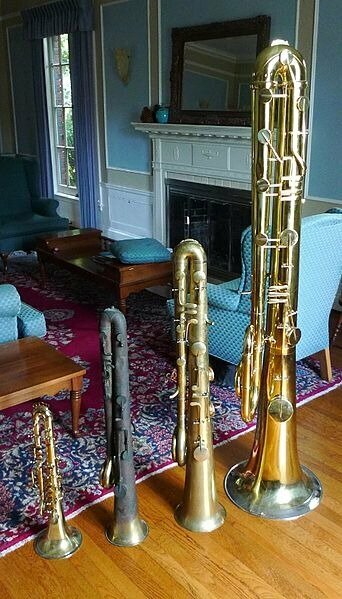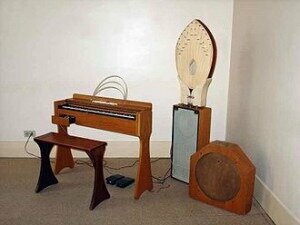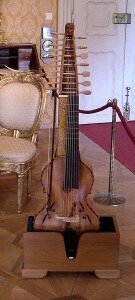
Family of Ophicleides
The ophicleide is one such instrument. It’s a brass instrument, played with a mouthpiece like a trombone, but looking like a metal bassoon. The instrument was invented in 1817 by Jean H. Asté, a French instrument maker. In the orchestra, the instrument was eventually replaced by the tuba, to the relief of many, because the ophicleide was reputed to be very difficult to play.
Gotthelf Kummer: Variations for Ophicleide and Piano

Ondes Martenot
Messiaen: Fête des Belles Eaux: II. L’eau
The glass harmonica is a crystallophone. You’ve made one yourself when you’ve rubbed a wet finger around the rim of a wine glass and made that ethereal shimmering sound. Now imagine a whole set of glasses, tuned so that you could play melodies. The first performer on the glass harmonica appeared around 1740. Mozart wrote for it, as did Beethoven. The sound is like a high-pitched organ – if you didn’t know what was being played, it would be difficult to discern. The pitched bowls are set on edge and turn, as if on a lathe, while the musician makes them resonate with his fingers.
Glass Harmonica

Baryton
Jörg Eggebrecht on baryton performs Haydn
If you listen at 1:18, you can hear the plucked strings sound, just as he gets through his little cadenza.
Somehow, we have lost a bit of life when we lost these instruments. But, when you imagine the tuning problem for the 16 strings of the baryton, or what happens if you (figuratively) break a “string” on the glass harmonica, then you might understand a bit better why they softly and suddenly vanished away.



